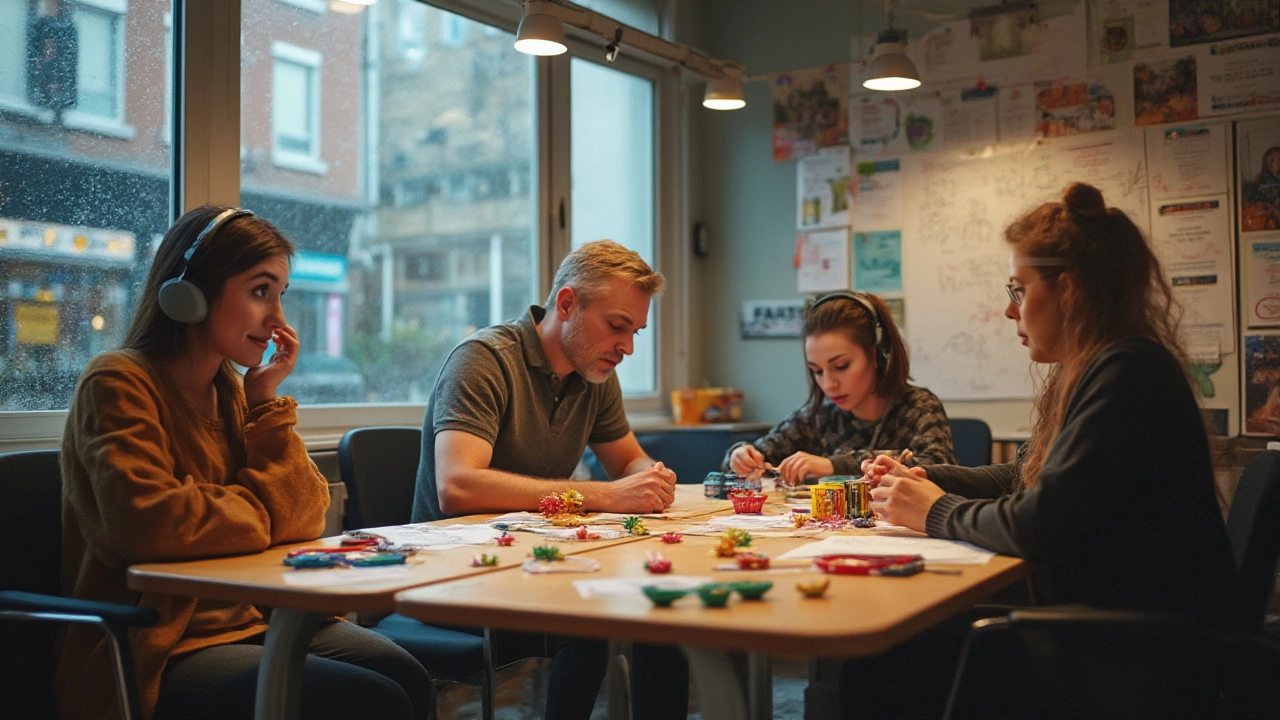Kinesthetic Learners: How to Teach Kids Who Learn by Doing
If your child or student loves to move, build, or touch things while learning, they’re probably a kinesthetic learner. These kids absorb information best when they can use their bodies. Instead of sitting still and listening, they need to climb, stretch, and explore. Below are real‑world ways to help them succeed without overwhelming you.
Why Kinesthetic Learning Works
When kids move, their brains release chemicals that sharpen focus. A simple experiment shows that a child who jumps rope while counting can remember numbers better than a child who just hears the numbers. The movement creates a physical link to the idea, making it easier to recall later. That’s why schools that add short activity breaks see higher test scores.
Practical Activities for Young Kids
1. Learning Stations. Set up a table for each subject. For math, use blocks to build addition problems. For spelling, let kids arrange letter tiles into words. Rotate every 10‑15 minutes so they stay engaged.
2. Story Acting. After reading a short story, ask the child to act out the main events. They can use props or simple costumes. This turns abstract plot points into real actions they can remember.
3. Outdoor Math. Take a chalk line outside and ask them to measure it with steps. Turn the measurement into a multiplication problem. The fresh air plus physical counting reinforces the concept.
4. Sensory Bins. Fill a bin with rice, beans, or sand and hide objects that match a lesson (e.g., animal figurines for a biology unit). Kids dig, find, and label each item, turning a quiet activity into a tactile adventure.
5. Movement Breaks. Every 20 minutes, do a quick stretch or a jumping‑jacks set. Pair the break with a quick quiz question—"What did we just learn?"—so the brain connects movement with recall.
These ideas fit easily into a preschool schedule, like at Nottingham Nursery School, where teachers blend free play with guided learning. You don’t need fancy equipment; everyday items work just fine.
Remember, the goal isn’t to force nonstop activity. It’s about weaving short, purposeful movement into lessons. A five‑minute hands‑on task can replace a long lecture and keep the child focused for the next activity.
Parents can also use these tricks at home. While cooking, ask kids to measure ingredients and talk about fractions. During a walk, point out shapes in the clouds and turn them into a quick geometry lesson.
Finally, keep an eye on balance. Some kinesthetic learners may become overly fidgety if they don’t get enough outlets. Provide a quiet corner with soft toys or a simple puzzle for moments when they need to calm down.
By honoring the way kinesthetic learners naturally absorb information, you’ll see confidence grow, grades improve, and a love of learning develop. Try one of these activities today and watch the difference in action.
Adult Learning Styles Explained: Visual, Auditory & Kinesthetic Insights
Discover the three major adult learning styles—visual, auditory, and kinesthetic. Learn practical tips for recognizing, embracing, and adapting to your unique learning style.
